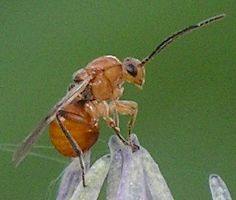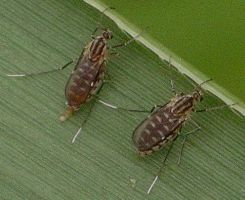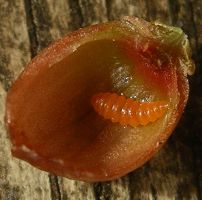
The word "gall" has several distinct meanings. Some people think of it being a synonym of insolence, impertinence, or cheek. Others think first of the bile produced by the liver which is stored in the gall bladder. It means to irritate, annoy or vex. And, related to this last definition, it refers to a growth on a plant caused by a foreign organism or substance. This last designation is my subject here.
There are extensive and scholarly tomes written about galls; I'm not going to pretend that I know all that much about them. They are interesting, and I have researched a few of the kinds that I find regularly so that I know their underlying bases. If you want to learn more about any particular gall, the important things to note are the host plant (many are very specific to only one species or genus), the shape and look of the gall, and its location on the plant. A large number of galls have been studied and their causative organisms identified.
It is easy to assume that plant galls are made by insects and, indeed, many of them are. But there are also galls caused by nematodes, mites, bacteria, fungi, viruses, and injury. Some of the most impressive galls are the large burls that appear on tree trunks. These grow over a long period and usually start with a small injury that causes the new layers of cells to follow the original abnormality. It is just like the formation of pearls in oysters, but a plant version rather than an animal. The larger the burl becomes, the more any slight deformity is exaggerated, so that a large knot may be full of twists and swirls of wood grain.

A gall can occur on any part of a plant, from the roots to the leaves and blossoms. In fact, many are named for the plant part on which they grow, such as the Hackberry Petiole Gall (the petiole being the "stem" of a leaf). This gall, caused by a tiny insect called a psyllid, is useful in identifying Hackberry Trees during the winter: the leaves with these round formations dry up but do not fall off when the plant sheds its foliage.
There are innumerable shapes that galls take. Some have amusing, but descriptive, names, such as finger, hedgehog, sea urchin, bladder, pouch, and nipple. They are sometimes very colorful. And some galls simply distort the stems of plants so much that they look like curled sculptures. There are galls that look like extra-dense clusters of leaves or buds, and others that look like flowers but are not really that at all. Some look like fruits, such as the commonly seen Oak Apple. Obviously, oaks do not produce real apples. Galls can be shiny and hard, roughly textured, or even woolly, like cotton. It is amazing to remember that all these forms are produced by the plant in response to the stimulus of the foreign organism, and are not themselves some separate creature.
One way to find out what lives in a gall is to simply open it up. Some galls are too hard or tiny, but others are like a little seed or balloon, with a larva of some insect inside. Galls that are older often have visible escape holes where their occupants emerged once they had matured. As might be expected, insects that develop inside of galls are usually pretty small. That's the main reason that their galls are more noticeable than they are. There are even specific families of insects that are named for their close association with their plants, such as the gall midges (cecidomyiidae) and the gall wasps (cynipidae). To confuse matters more, there is a family of scale insects that look so much like galls that they are called gall-like scale (kermisidae).
 gall wasp |  gall midges |  gall midge larva |
Oak trees seem to have an inordinate number of different kinds of galls, especially on their leaves. Those on Red Oaks are often lightweight and papery, or simply thick swellings. Some on Live Oaks, though, form hard little balls. Small ones are the size of BBs, while a larger kind can be an inch across. When the small ones come loose from their foundation in great numbers, they sound like hail on the roof. When the large ones fall, they can give a nasty bruise to the head! Luckily, they are never all that numerous.
Poison ivy is quite common in some of the natural areas that I visit frequently, and I've noticed that some of the leaves of this noxious weed look as if they are themselves infected with poison, with scabby looking welts and warty blisters that remind me of the way the plant chemicals affect human flesh. Of course, poison ivy is not allergic to itself, and the abnormal growths are caused by a mite, but the effect is quite amusing.
Sometimes one particular kind of gall will be more numerous than usual on a tree or shrub in our yard. Hardly noticeable when sparse, a large infestation can cause panic in gardeners who fear that their plants are doomed. In reality, most galls are rather benign, and only very concentrated occurrences can harm a plant. Our Live Oak trees always have numerous galls and are still in good health. While commercial growers of plants such as grapes have to worry about a drop in fruit production, the average homeowner need not be concerned about galls on trees. Instead, these curiosities should be cause for wonder at the delightful diversity found in even the most mundane nature that surrounds us.